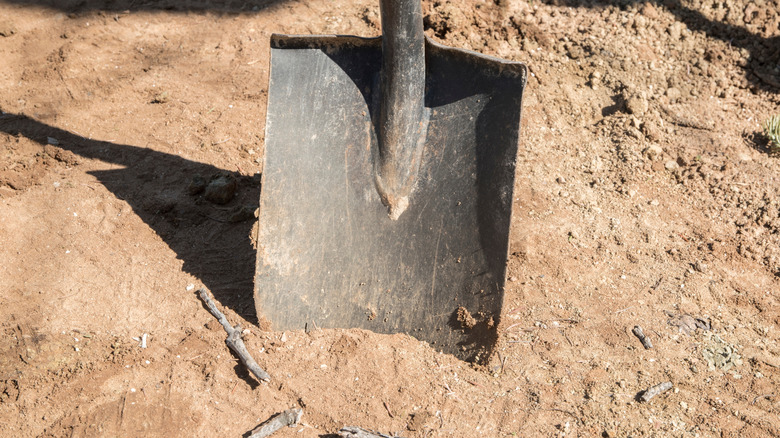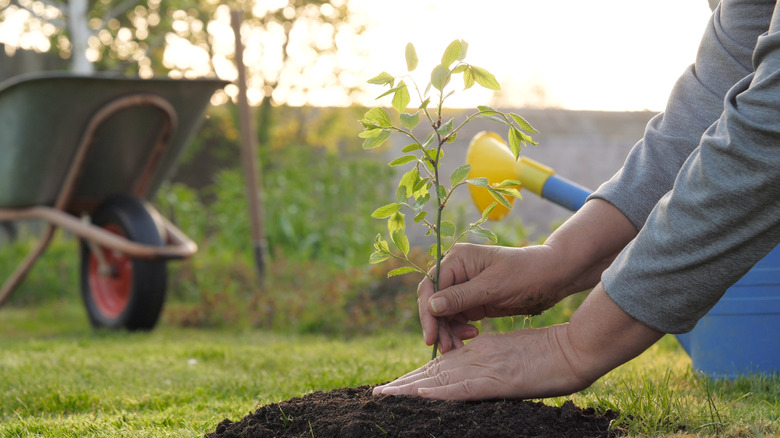Successfully Plant A Tree In Sandy Soil With These Tips
There are three main types of soil: clay, loamy, and sandy. While loamy is considered suitable for most home gardens, sandy soil is perhaps the trickiest type to plant in. Not only is the soil composed of rocks and sand, but it also does not contain organic materials that most plants need to grow and thrive. Anything you plant in sand can lose water quickly because of the soil's notoriously high drainage rate. However, having sandy soil around your home doesn't mean it is impossible to plant a tree. To help avoid some of the most common mistakes when planting a new tree, consider selecting sand-tolerant trees planted with organic materials, and know the proper amount of water and fertilizer needed to help your new tree thrive.
First, it's important to do some research to see which trees are tolerant of sandy soils. These are more likely to thrive in your yard without needing the help of too many organic materials throughout the year. Just some of the possible options include crabapple (Malus sylvestris), juniper (Juniperus communis L.), and red oak (Quercus rubra). However, you will also want to keep in mind that some of these mature as very large trees, and are best planted away from your house. No matter which tree you choose, you will need to improve sandy soil for gardening by mixing in organic material, such as topsoil or compost. Follow the instructions on the container concerning depth, and add 1 cubic foot of organic material around the root ball before covering it back up.
Tips for watering and fertilizing trees planted in sandy soil
As soon as you've planted your tree and added organic matter around the base of the trunk, it is now time to add some water. Take a garden hose and directly water the soil. This first watering session is the most important to ensure adequate soil saturation. While over-watering is one of the most common reasons why newly planted trees do not survive, this is not a prevalent problem in sandy soil due to its quick-draining nature. On average, half an inch of water is needed to saturate every foot of sandy soil. After this point, you will need to check your tree's soil moisture every day for the first year and add water whenever the area feels dry. You will likely find that you need to add the most water during hot and dry seasons, as it drains through sandy soil even quicker. Adequate water helps the tree's roots successfully take hold in the soil and continue to thrive for years to come.
Given the fact that sandy soil lacks some of the nutrients of its loamy counterparts, you might also consider adding fertilizer to your newly planted tree. Choose and apply the right fertilizer specific to the tree planted, and make sure you follow the manufacturer's instructions. In general, fertilizer is used throughout the spring and early summer only so that the tree can harden for the upcoming winter season. Finally, you may need to add stakes to support top-heavy trees during the first few seasons to help make up for a lack of ground stability in the sand.

